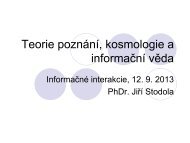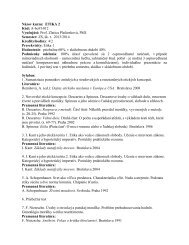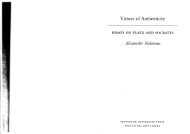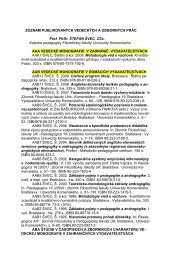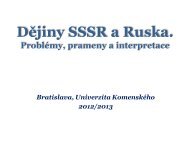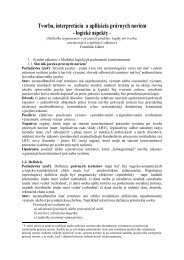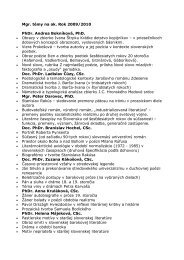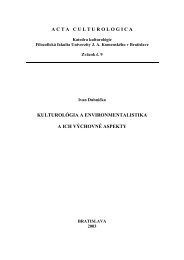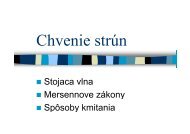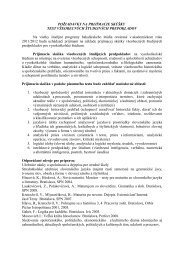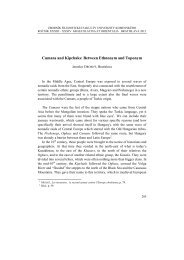You also want an ePaper? Increase the reach of your titles
YUMPU automatically turns print PDFs into web optimized ePapers that Google loves.
124 LEXICAL MEANI G<br />
The mo t extreme the aurus- tyle approache hold that there are no definition for<br />
word in the lexicon, as the mean ing of a word can be derived from "the company<br />
it keeps" - i.e. which other word it is linked to. The following sub ection exemplify<br />
the e po itions in turn, though it mu t be pointed out that many lexicologi t<br />
take a middle ground, expecting that both definitional (dictionary) <strong>and</strong> relational<br />
(the aurus) information i needed for a complete emantic repre entation of a<br />
lexeme.<br />
6.3.1 Lexicon as dictionary<br />
In chapter3 we di eu ed the lexicon-a -dictionary metaphor in term<br />
of how componential theories, like dictionarie , break down the meaning of<br />
lexeme into smaller parts. This mean that the information needed for predicting<br />
synonym, hyponym or antonym relation among word i available in their<br />
componential definition . Thus mo t componential theo ri ts take the view that<br />
the <strong>relations</strong> themselves do not need to be explicitly mentioned in the words'<br />
<strong>lexical</strong> entrie. In other word, these theori t think that arepre entation like that<br />
in (20) is ufficient, so that the additional information in (21) is not nece sary.<br />
(20) man [HUMA, ADULT, MALE]<br />
(21) man HUMA, ADULT, MALE<br />
SEX ANTONYM = woman<br />
AGE A TONYM = boy<br />
E R- Y O YM = gentleman, guy, chap.fetlow<br />
HYPONYM (MARITAL TAT ) = bachelor<br />
HYI'ONYM (JOB) = {fireman, postman, h<strong>and</strong>yman ... }<br />
Approache that do not include the relational information in (21) require<br />
another mean of determining which lexeme are ynonyms, antonyms, <strong>and</strong><br />
hyponyms. This i done by pecifying rule that determine these relation, uch<br />
a tho e in (22):<br />
(22) a.<br />
b.<br />
c.<br />
X <strong>and</strong> Y are synonym iff [i.e, 'ir <strong>and</strong> only ir'] thcy hare all the same components<br />
X <strong>and</strong> Y are an tonym (<strong>and</strong>/or co-hyponyms) iff only one of their componenl di ffer ,<br />
X is the hyponym of Y iff it has all of the arne component a Y plu at lea t one more.<br />
Using the e rules, we can tell that lady (in the sense that denotes 'female<br />
adult ' generally) is a ynonym of woman, man i the oppo ite of woman, <strong>and</strong><br />
fireman i a hyponym of man, a hown in figure 6.4.<br />
Evaluating the dictionary approach<br />
The dictionary approach i attractive becau e it explain why particular word<br />
are related to one another - that is, because they have semantic components<br />
in common. On the other h<strong>and</strong>, becau e it only concem the word' emantic<br />
components, non-denotational propertie (like the ound of a word or it ocial<br />
register) cannot contribute to these relation . So, according to the information<br />
[<br />
sa me componen<br />
-7<br />
flwo<br />
synonyms<br />
lady<br />
HUMA HU<br />
ADULT AD<br />
FEMALE FE<br />
Figure 6.4 eOin<br />
in figure 6.4, lady i a go<br />
classical componential th<br />
<strong>and</strong> not for relation that<br />
There have been attem<br />
non-denotational issue I<br />
matic approach, in whicl<br />
hare all relevant propen<br />
except one. In the case c<br />
i their form, <strong>and</strong> in the (<br />
meaning. The tricky part<br />
relevant or not within a CI<br />
6.3.2 Lexicon as ti<br />
Theorie that<br />
entries (or en se ubentr<br />
to other <strong>lexical</strong> entrie (Ol<br />
high would somehow rep<br />
roots in Structurali t view<br />
thinkers - e.g. Co eriu a<br />
orne computationally in<br />
1996' WordNet, Fellbaun:<br />
forgo componential sen e<br />
words that constrain one I<br />
are in the antonym relatir<br />
end of whatever cale tt<br />
different, but related, to te<br />
Diagrammim<br />
One the aurus-type appn<br />
enne Lehrer (1974). Thi:<br />
in figure 6.5, in which ear<br />
fieJd - an organization of



